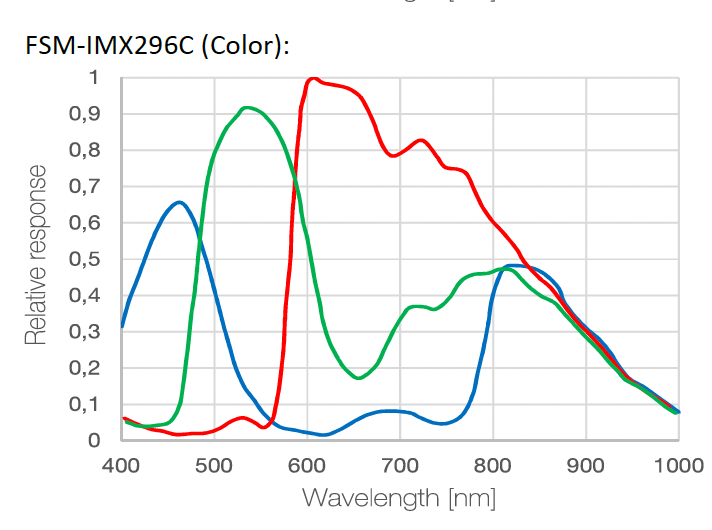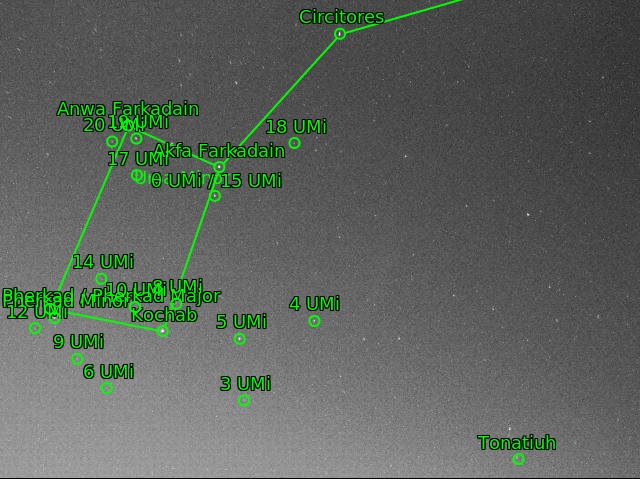RGB photometry with raspberry pi cam
Contents
RGB photometry with raspberry pi cam#
Objectives#
To obtain night sky images with stars that allow RGB photometric calibration. The astronomical calibration is useful to measure celestial object’s magnitudes (with simple differential photometry) and night sky brightness for light pollution studies. In this case the camera setup should be calibrated with absolute photometry: observations at different altitudes over the horizon (different airmasses) to determine zero points and extinction coefficients with the Bouger law.
More information on the RGB Photometric System can be found at the webpage https://guaix.ucm.es/rgbphot/ and the researcher papers.

Fig. 68 RGB photometric bands compared with Johnson-Cousins bands.#
Raspberry pi cam setup#
For this test Agustín Núñez observed with a raspberry pi global shutter camera (large pixel size of 3.45μm × 3.45μm, 1.6MP Sony IMX296C sensor) with a CCTV Pentax zoom lens (f=16mm F/1.4, CS mount). The system was pointed from a residential zone near Madrid (Villalvilla) to the north (UMi field).

Fig. 69 Sony IMX296 sensor spectral response.#

Fig. 70 Rasberry Pi camera and lens used in the test.#

Fig. 71 Capture of the image via SharpCap.#

Fig. 72 The resulting capture with astrometry with Astrometry.net. Ursa Minoris constellation is in the field of view. Center (RA): 14h40m33.002s (Dec): +79°11’43.668” FoV: 17.9 x 13.4 deg#

Fig. 73 Complete RAW image displayed with a python code.#

Fig. 74 Clip of the complete image divided in the RGB channels to show star images.#

Fig. 75 RGB standard stars found in the FoV of the scientific image using RGBloom open software.#

Fig. 76 After astrometry we can determine the X,Y position (pixel) of the RGB standard stars. The label indicates G band magnitude.#

Fig. 77 Showing the RGB magnitudes.#

Fig. 78 Aperture photometry: circle for star and circular annulus for the background.#

Fig. 79 Determining the zero points by comparison of tabulated magnitudes and measured star fluxes.#
The zero points found: ZP(R) = 12.27 ZP(G2) = 13.42 ZP(G3) = 13.45 ZP(B) = 13.02
Please note:
No flatfield correction (vignetting) has been performed
Brightest stars seem to be saturated in G channels
Stars with magnitude 7-8 are probably to faint for this exposure time.
